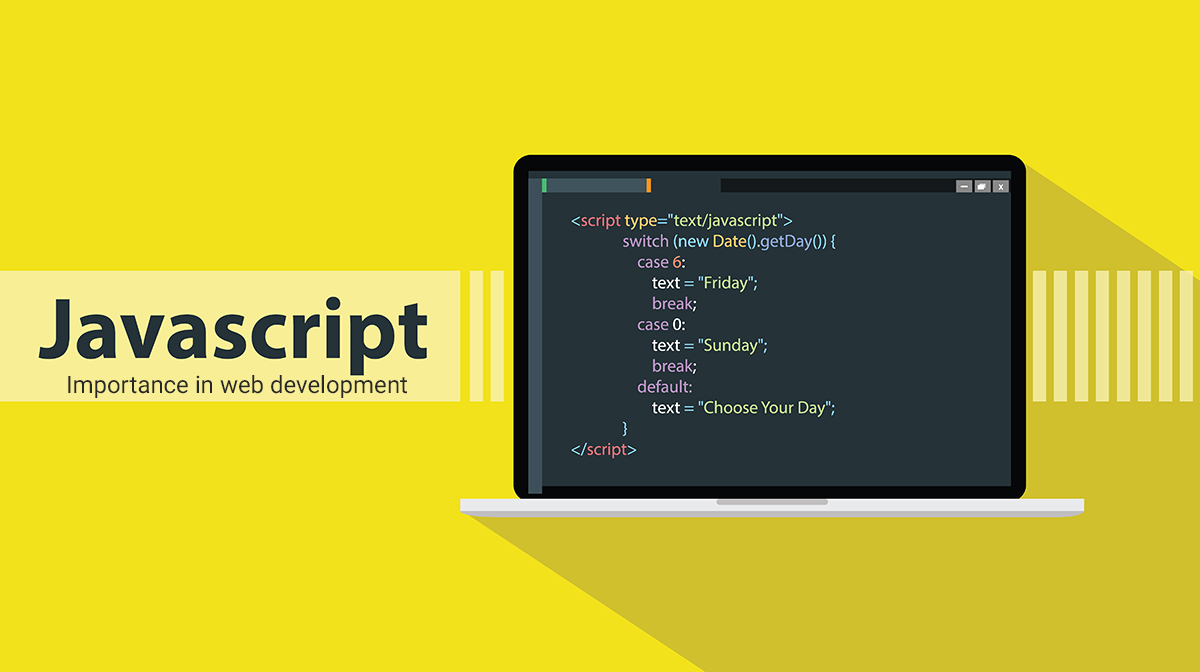What is javascript? How can you explain it?

JavaScript is a programming language used primarily to create interactive web applications. It was developed by Brendan Eich in 1995. It is now one of the most widely used programming languages in the world. Powering everything from simple web pages to complex web applications, mobile apps, and even server-side applications. In this article, we will explore what JavaScript is, how it works, and some of its most common use cases.
What is JavaScript?
JavaScript is a scripting language that enables developers to create dynamic, interactive web pages. It is a lightweight programming language that is interpreted by the browser. Meaning that it runs locally on the user’s computer, rather than on a remote server. This allows developers to create web applications that can respond to user input and update the page. Content in real-time, without requiring a full page reload.
JavaScript was originally developed to add interactivity to static HTML pages. As the web has evolved, however, so too has JavaScript. Today, JavaScript is used to create rich, interactive web applications that can perform complex operations. Such as rendering 3D graphics, playing audio and video, and communicating with servers via APIs.
How does JavaScript work?
JavaScript code is typically embedded directly into HTML pages using the <script> tag. When a web page is loaded, the browser reads and interprets the HTML, CSS, and JavaScript code to render the page. JavaScript code can also be loaded dynamically at runtime using AJAX. A technique that allows web pages to update their content without requiring a full page reload.
JavaScript code is executed by the browser’s JavaScript engine. Which converts the code into machine-readable instructions that can be executed by the computer’s processor. Different browsers use different JavaScript engines, each with their own performance characteristics and quirks. For this reason, it is important for developers to test their code on multiple browsers to ensure compatibility.
JavaScript is a loosely-typed language, which means that variables do not need to be declared with a specific data type. Instead, the data type is inferred from the value assigned to the variable. This can make JavaScript code easier to write and read. It can also lead to unexpected behavior if developers are not careful.
JavaScript has a number of built-in objects and functions that developers can use to perform common tasks. Such as manipulating strings and arrays, working with dates and times, and creating complex data structures. Developers can also create their own custom objects and functions to encapsulate complex logic. Make their code more modular and maintainable.
What are some common use cases for JavaScript?
It is used in a wide range of applications, from simple web pages to complex web applications, mobile apps, and server-side applications. Some of the most common use cases for JavaScript include:
- Web applications: It is used extensively in web applications to provide interactivity. Respond to user input, and update content in real-time. Examples of web applications that use JavaScript include Gmail, Google Maps, and Facebook.
- Mobile apps: JavaScript is often used in mobile app development as part of hybrid app frameworks. Such as React Native and Ionic. These frameworks allow developers to write a single codebase that can be used to create apps for both iOS and Android.
- Game development: JavaScript is increasingly being used in game development, thanks to libraries such as Three.js and Babylon.js. Which allows developers to create 3D games that run in the browser.
- Server-side applications: While JavaScript was originally designed to run in the browser, it can also be used on the server side, thanks to platforms such as Node.js. Node.js allows developers to write server-side code using it, which can make it easier to build full-stack web applications.
- Internet of Things (IoT): JavaScript is also being used in IoT applications, thanks to platforms such as Johnny-Five, which allow developers

Explanation:
It is a popular high-level programming language used to create interactive websites and web applications. It was first created in 1995 by Brendan Eich, a programmer at Netscape Communications Corporation. Since then, it has become one of the most widely-used programming languages on the web, powering everything from simple scripts to complex applications.
It is a versatile language that can be used for a wide range of applications. It is primarily used to add interactivity to web pages, but it can also be used for server-side programming, game development, and mobile app development. Because it is so widely used, it has a large and active community of developers who share tips, tricks, and best practices.
Key features:
- One of the key features of JavaScript is its ability to manipulate the Document Object Model (DOM), which is the tree-like structure that represents the content of a web page. Using JavaScript, developers can modify the DOM in real-time, creating dynamic and interactive web pages. For example, they can use JavaScript to create pop-up menus, validate form data, or update the contents of a web page without having to reload it.
- Another important feature is support for asynchronous programming, which allows code to run in the background while other tasks are being performed. This is particularly useful for tasks that involve network requests or other I/O operations, which can take a long time to complete. By using asynchronous programming, developers can create more responsive and efficient applications.
- It is also a dynamically typed language, which means that the type of a variable can change at runtime. This makes it easy to write code that is more flexible and adaptable, but it can also lead to errors if variables are not properly initialized or used. To help prevent these kinds of errors, many developers use tools like TypeScript, which adds static type-checking to JavaScript.
- It can be run in a variety of environments, including web browsers, servers, and even desktop applications. In the context of web development, it is often used in conjunction with other web technologies like HTML and CSS to create rich, interactive user interfaces. For example, developers might use JavaScript to create animations, handle user input, or fetch data from a remote server.
Uses of javascript:
One of the most popular uses of JavaScript is for front-end web development, which involves creating the user interface and interactive components of a web application. This typically involves using a combination of HTML, CSS, and JavaScript to create a responsive and engaging user experience. JavaScript frameworks like React, Angular, and Vue.js have become increasingly popular in recent years, as they provide developers with a set of tools and best practices for building complex and scalable web applications.
In addition to front-end web development, It can also be used for back-end web development, which involves writing code that runs on a server and responds to requests from clients. There are a number of frameworks and libraries available for this kind of development, including Node.js, Express, and Meteor. /fmuxwwv9hcq
Advantages of javascript:
One of the advantages of using for back-end web development is that it allows developers to use the same language for both the front-end and back-end of an application. This can simplify development and reduce the amount of code that needs to be written since developers can reuse code and libraries across different parts of the application. https://youtu.be/ar6aqjx3d6s
Another advantage of using JavaScript is its support for functional programming, which is a programming paradigm that emphasizes the use of functions to create reusable and composable code. Functional programming can make code easier to test and debug, and it can also make it more efficient and scalable. Many JavaScript frameworks and libraries, such as React and Redux, are built using functional programming concepts. /-bj5wq8oqji
It is a constantly evolving language, with new features and updates being added on a regular basis. The latest version of JavaScript is ECMAScript 2021, which includes new features like the optional chaining operator, the bullish coalescing



